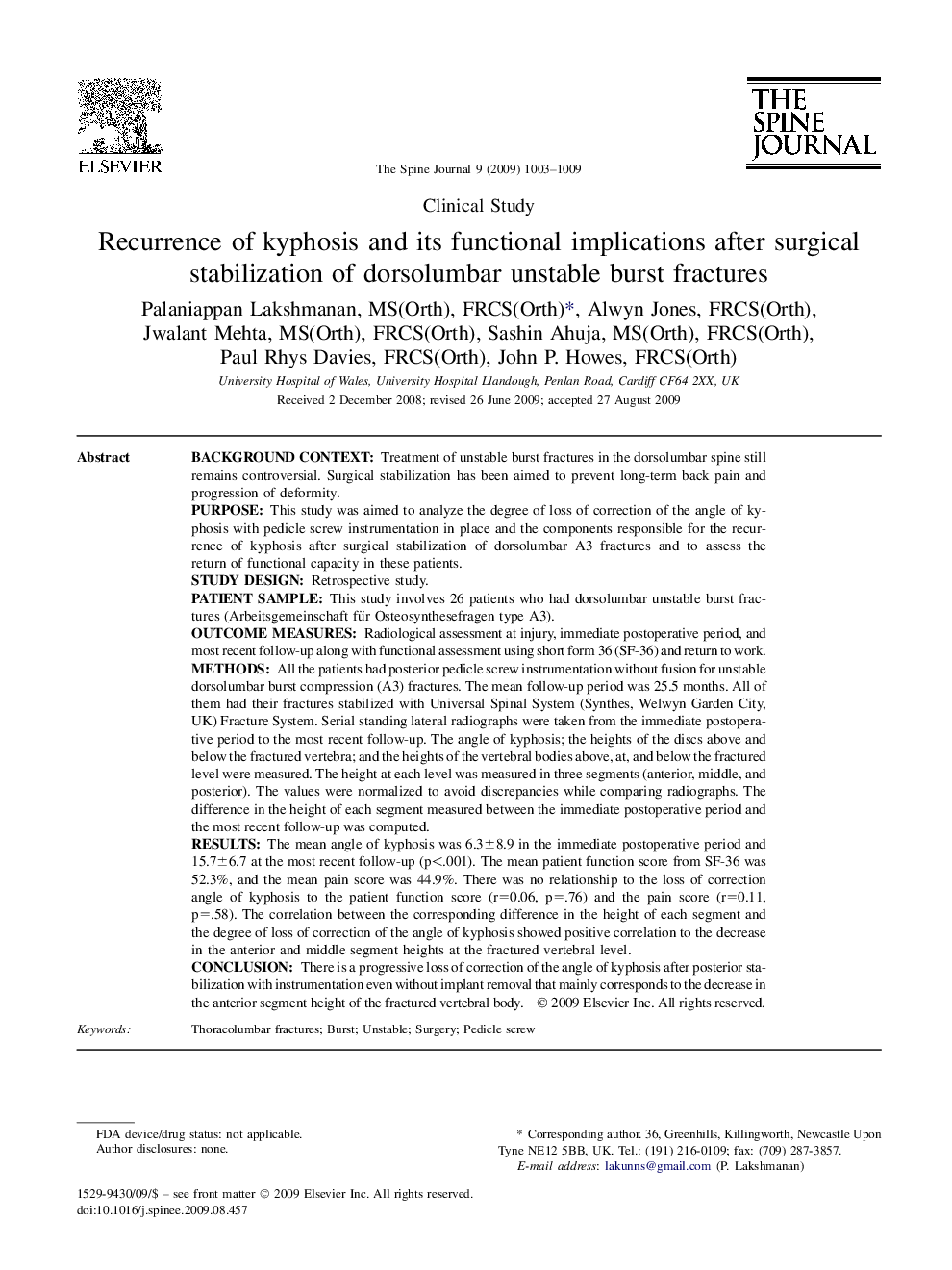| کد مقاله | کد نشریه | سال انتشار | مقاله انگلیسی | نسخه تمام متن |
|---|---|---|---|---|
| 4099310 | 1268636 | 2009 | 7 صفحه PDF | دانلود رایگان |

Background contextTreatment of unstable burst fractures in the dorsolumbar spine still remains controversial. Surgical stabilization has been aimed to prevent long-term back pain and progression of deformity.PurposeThis study was aimed to analyze the degree of loss of correction of the angle of kyphosis with pedicle screw instrumentation in place and the components responsible for the recurrence of kyphosis after surgical stabilization of dorsolumbar A3 fractures and to assess the return of functional capacity in these patients.Study designRetrospective study.Patient sampleThis study involves 26 patients who had dorsolumbar unstable burst fractures (Arbeitsgemeinschaft für Osteosynthesefragen type A3).Outcome measuresRadiological assessment at injury, immediate postoperative period, and most recent follow-up along with functional assessment using short form 36 (SF-36) and return to work.MethodsAll the patients had posterior pedicle screw instrumentation without fusion for unstable dorsolumbar burst compression (A3) fractures. The mean follow-up period was 25.5 months. All of them had their fractures stabilized with Universal Spinal System (Synthes, Welwyn Garden City, UK) Fracture System. Serial standing lateral radiographs were taken from the immediate postoperative period to the most recent follow-up. The angle of kyphosis; the heights of the discs above and below the fractured vertebra; and the heights of the vertebral bodies above, at, and below the fractured level were measured. The height at each level was measured in three segments (anterior, middle, and posterior). The values were normalized to avoid discrepancies while comparing radiographs. The difference in the height of each segment measured between the immediate postoperative period and the most recent follow-up was computed.ResultsThe mean angle of kyphosis was 6.3±8.9 in the immediate postoperative period and 15.7±6.7 at the most recent follow-up (p<.001). The mean patient function score from SF-36 was 52.3%, and the mean pain score was 44.9%. There was no relationship to the loss of correction angle of kyphosis to the patient function score (r=0.06, p=.76) and the pain score (r=0.11, p=.58). The correlation between the corresponding difference in the height of each segment and the degree of loss of correction of the angle of kyphosis showed positive correlation to the decrease in the anterior and middle segment heights at the fractured vertebral level.ConclusionThere is a progressive loss of correction of the angle of kyphosis after posterior stabilization with instrumentation even without implant removal that mainly corresponds to the decrease in the anterior segment height of the fractured vertebral body.
Journal: The Spine Journal - Volume 9, Issue 12, December 2009, Pages 1003–1009